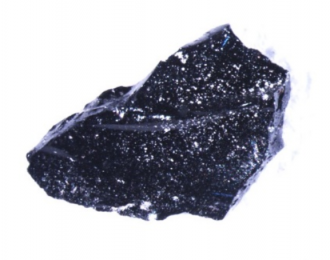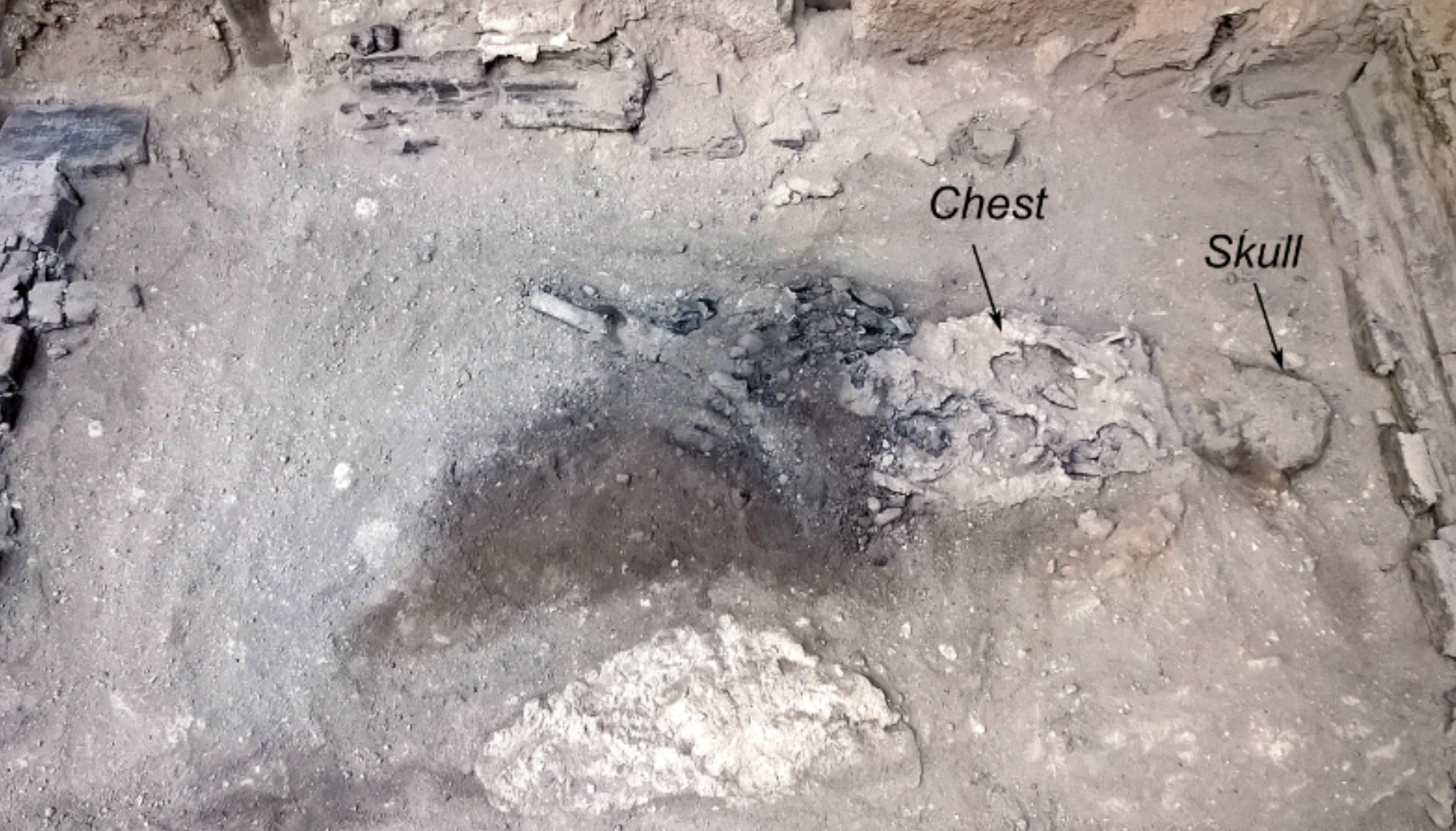Media release
From:
Archaeology: Vesuvian ash cloud turned brain to glass
A unique dark-coloured organic glass, found inside the skull of an individual who died in Herculaneum during the 79 CE Mount Vesuvius eruption, likely formed when they were killed by a very hot but short-lived ash cloud. The conclusion, from research published in Scientific Reports, is based on an analysis of the physical properties of the glass, thought to comprise the fossilised brain of the individual.
Glass rarely occurs naturally due to the specific conditions required for formation. For a substance to become glass, its liquid form must cool fast enough to not crystallise when becoming solid — requiring a large temperature difference between the substance and its surroundings — and the substance must become solid at a temperature well above that of its surroundings. As a result, it is extremely difficult for an organic glass to form, as ambient temperatures are rarely low enough for water — a key component of organic matter — to solidify. The only suspected natural organic glass was identified in 2020 in Herculaneum, Italy, but it was not clear how this glass formed.
Guido Giordano and colleagues analysed fragments of glass sampled from inside the skull and spinal cord of a deceased individual from Herculaneum, found lying in their bed in the Collegium Augustalium. The results of the analysis — which included imaging using X-rays and electron microscopy — indicated that, for the brain to become glass, it must have been heated above at least 510 degrees Celsius before cooling rapidly.
The authors note that this could not have occurred if the individual was heated solely by the pyroclastic flows which buried Herculaneum, as the temperatures of these flows did not reach higher than 465 degrees Celsius and would have cooled slowly. The authors therefore conclude, based on modern volcanic eruption observations, that a super-heated ash cloud which dissipated quickly was the first deadly event during Vesuvius’s eruption. They theorise that such an event would have raised the individual’s temperature above 510 degrees Celsius, before it rapidly cooled to ambient temperatures as the cloud dissipated. The bones of the individual’s skull and spine likely protected the brain from complete thermal breakdown, allowing fragments to form this unique organic glass.
Multimedia





 International
International



